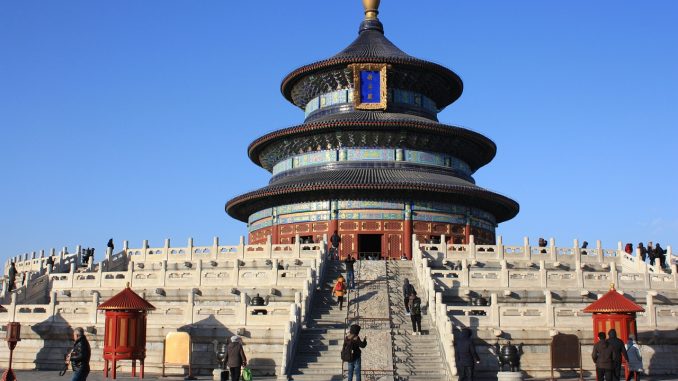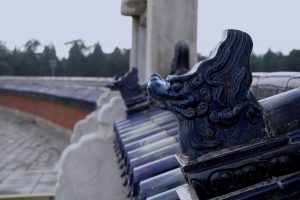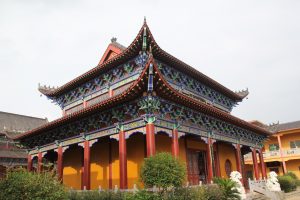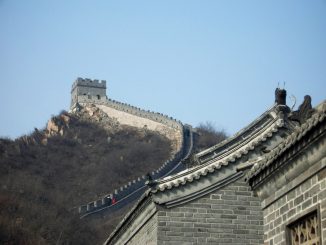

Located in southern Beijing, The Temple of Heaven was first constructed in 1420 in the 18th year of the reign of Ming emperor Yongle. The Temple of Heaven was extended and renovated during the reigns of Ming emperor Jiajing, and Qing emperor Qianlong. The Temple of Heaven was the site where the emperors of the Ming and Qing dynasties would pray for a good and prosperous harvest. To symbolize heaven and earth, the temple is divided by two enclosed walls with the northern part of the temple being circular and the southern portion square. The two separate areas are to reflect the ancient Chinese belief that the Earth is square and the Heaven is round. Two principle clusters of worshipping buildings are connected by the Red Stairway Bridge. The Temple of Heaven is considered a Taoist temple but the Chinese concept of heaven worship predates the creation of Taoism.
The Hall of Prayer for Good Harvests is the triple-gabled circular building, built on three levels of a marble base. It is 36 meters in diameter and 38 meters tall. The entire structure is built of wood and fastened together without the aid of nails. The current building on the site is a recreation of the original that burned down in 1889 after a lightning strike.
In 1914, Yuan Shikai, President of the Republic of China, performed a Ming prayer ceremony at the temple in a successful effort to have himself declared Emperor of China though his reign was short lived.
After New China was founded in 1949, the central government invested large amounts of capital in the protection and maintenance of the historical and cultural sites inside the temple.

Temple of Heaven Facts
- In 1918 the temple was turned into a park (not a theme park) and was for the first time in its history open to the public.
- In 1998, the Temple of Heaven was declared a UNESCO World Heritage Site.
- The northern part of the temple is the Altar of Prayer for Good Harvests.
- The southern portion of the circular sltar was where emperors held ceremonies for worshiping the Heaven were traditionally held.
- The Temple of Heaven is 4 times larger than the Forbidden City.
- As with all temples in China, the main structures in the Temple of Heaven lie along a north-south axis.
- The upper tier of the Circular Altar is decorated with nine stones symbolizing the importance of the number nine in Chinese cosmology and the nine levels of heaven.
Temple of Heaven Travel Tips
- The temple park is generally accessed by the west gate, but there are four gates and they are all unique. The traditional entry gate for ceremonial purposes is the south gate.
- As with visiting many sites around the world it pays to get up early. Many locals have yearly tickets and use the park quite frequently. The park is particularly nice to visit early Sunday morning around 7:00-7:30.
- The park is quite large and the gardens should not be overlooked. Of particular interest is the old cypress trees, some of which are more than 600 years old.
- There are two different kinds of entrance tickets. Tickets to the park only will not get you into the historical buildings but they cost less and you can look at the outside of the buildings.
- The historical buildings open roughly at 8:00am and close roughly at 5:00pm. These times sometimes change in the evening and if there are lots of people they sometimes, but not always stay open a bit later. There are also seasonal differences of about a half hour either way and it is best to check times before you go.
- Ticket sales stop an hour before closing so make sure to give yourself plenty of time.
- While there is plenty of shade at the park it can get quite hot. Dress appropriately and remember that it’s still a religious site.
- Wear good walking shoes. As we noted earlier the park is giant. If you want to see even a small part of the grounds you will put some miles on your feet.

